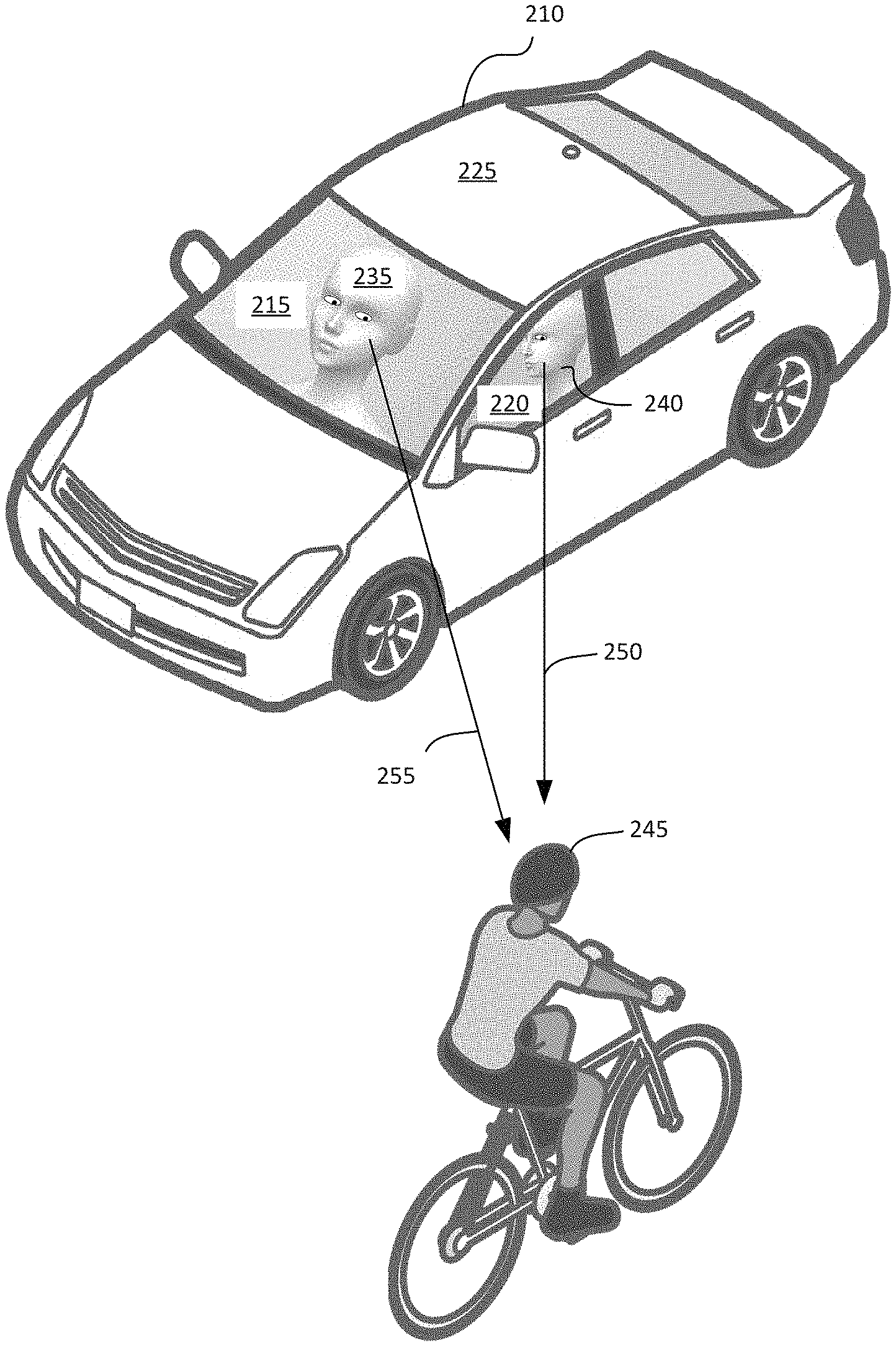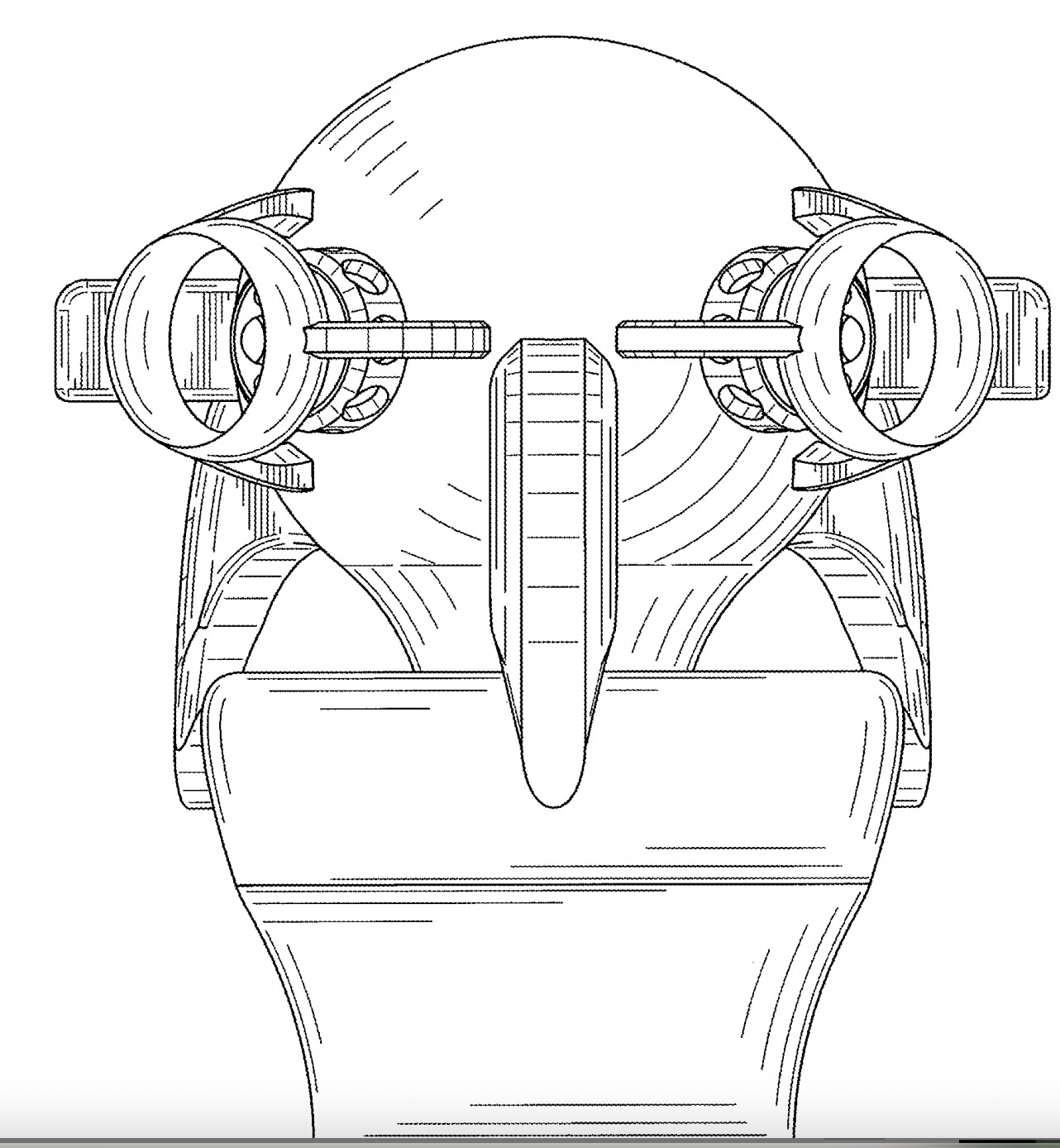Hello from FedInvent,
On Tuesday, USPTO granted 7,381 patents. FedInvent analyzed the One hundred fifty-157 patents with taxpayer funding.
The FedInvent Patent Report is available here.
To explore the FedInvent Report by Department start here.
Here are this week’s highlights.
Virtual Humans Or Space Alien Drivers — Read This Patent
The science and technology American competitiveness priorities put forth by our science and technology policymakers is autonomy. Not the self-governing freedom kind of autonomy. The autonomous system kind -- self-driving cars, trucks, airport shuttles, boats, etc. One of the problems with all things autonomous is that there is a lot of human anxiety about looking up in your rearview mirror and seeing a giant tractor-trailer barreling toward you without a driver behind the wheel. Will they even have a wheel? Ditto on autonomous cars cruising through a school zone.
Inventors from the University of Central Florida have patented a solution to this problem. US Patent 11148671, "Autonomous systems Human Controller Simulation." This patent has a serious overdose of big word patent speak…
"…the use of computer simulations to display an anthropomorphic virtual human for trust-sensitive autonomous or semi-autonomous systems wherein the virtual human exhibits the reactive and directive behavior consistent with a situationally aware, competent controller of the system in real-time."
Without bombarding you with our overdose of big word patent speak, the invention creates "virtual humans", a kind of avatar, that mimics and projects human behavior you would expect to see when a vehicle and a human driver do driving stuff. For example,
"…autonomous vehicle that slows down and makes a right turn. The virtual human would move her limbs in synchronization with the turning on of a right-turn blinker as the autonomous control system turns on the real-life, existent vehicle's blinker before the turn. The virtual human further turns her head right, appearing to visually scan the area prior to the turn. The virtual human then moves her rendered foot from the accelerator pedal location to the brake pedal location as the autonomous control system operates the existent vehicle to slow the vehicle. As the autonomous control system turns the wheels to the existent vehicle, the virtual human makes the motions of turning a steering wheel."
The inventors address autonomous vehicles not having a steering wheel. "…the virtual human "holds" a presumed or rendered steering wheel making minor corrections consistent with the operation of the actual vehicle."
This patent also wins this week’s award for best product placement.
It's an interesting patent that provides a solution to one of the vexing problems associated with autonomous vehicles — how to get real humans not to freak out when they interact with them in the real world. If one of these virtual humans is at the wheel of the semi, will human anxiety ensue?
The Innovation Agenda
On Monday, October 18, 2021, the Biden administration said it is moving forward on regulations to limit the spread of several toxic chemicals, called "forever chemicals," because they take so long to break down. Public-health advocates say forever chemicals are harmful to humans and should become the target of a widespread cleanup effort.
White House officials said they are working on a proposal to designate some chemicals classified as perfluoroalkyl and polyfluoroalkyl substances, or PFAS, as hazardous substances under 1980 federal law. This status could make manufacturers and other distributors of the chemicals liable for cleaning up contaminated sites. The Biden administration outlined a series of proposals to accelerate the cleanup of the toxic chemicals, monitor the country's drinking water supply, and help "contaminated communities" under a three-year road map. White House officials are also pressuring Congress to pass legislation to address the chemical contamination. The infrastructure bill stuck in the House includes a $10 billion grant program.
On Tuesday, Oyxtec, LLC in Newton, MA, received US Patent 11148964, "Soil and Water Remediation Method and Apparatus for Treatment of Recalcitrant Halogenated Substances." Oxytec's invention was funded by the National Institutes of Health, National Institute of Environmental Health Sciences. The patent covers techniques for the remediation of contaminated water and soil to reduce the concentration of organic compounds such as the highly recalcitrant halogenated substances, such as poly- and perfluoroalkyl substances (PFAS). Chemicals that are not readily degraded or destroyed by other chemical oxidation, chemical reduction, combined chemical oxidation, reduction, or bio-oxidation methods. Good timing.
Are The Bananas Vegan?
I am not happy about those little barcode labels with the product number on your plums, tomatoes, and red peppers. The grocer doesn't want the organic plums mixed up with the more humble regular plums in the display or at the register. They also provide the product code, so you have the number when you wander up to the produce scale to print another barcode and product number label to go on the outside of the plastic bag holding your plums. I'm also not a fan of spraying the zucchini with some oily stuff to make them look shinier under the specially designed produce lighting to make the greens well greener. Then we found this. US Patent 11147282, "Biopolymer-Based Preservation of Perishable Products," funded by the USDA. The patent advertises its edible biopolymer coatings as "safe, simple, and versatile coatings that enhance preservation of various perishable products."
The coating can be transparent. The coating can include an additive such as any of the following: anti-microbial agents, antifungal agents, antibacterial agents, enzyme inhibitors, ethylene-capturing molecules, ethylene-absorbing agents, aluminosilicates, silk fibroin-based aerogels, oxidizing agents, potassium permanganate, ethylene receptor antagonists, porphyrins, hormones, hormone receptor agonists, hormone receptor antagonists, nutraceutical agents, dietary supplements, flavorings, sweeteners, perfumes, fragrances, colorings, and dyes, and in any combination. Perfumes, fragrances, colorings, and dyes?? So your bananas will never be green, and they'll smell like a banana?
The patent images, mostly black and white photos, not drawings, show the fruit in various stages of decay vs. using the amorphous silk fibroin edible coating. I'm not sure how to feel about the 200-gram weight on the coated banana. You can make your own decisions on this one. The whole invention incorporates all the things I don't like in the produce section — labels and coatings on my produce.
We ran this invention by the vegans. They wondered where the ingredient list would go so they could tell if the vegetables are vegan. Think about that one.
The Best of the Rest
Vaccines — There are seven vaccine-related inventions, including one from Curevac AG funded by DARPA (11149278) and a COVID/MERS specific invention (11147826) funded by the Defense Threat Reduction Agency and NIH National Institute of Allergy and Infectious Diseases (NIAID)
Vegan Fish Food — There is a new fish food patent from Prairie Aquatech, LLC in South Dakota for use in aquaculture. Prairie Aquatech produces plant-based nutritional ingredients. So we have vegan fish food and fruit and vegetables covered in biopolymers that may not be vegan.
Is Eight Times the Charm? — This ocean thing has made another appearance.
This time as D933577. We are up to eight iterations of this design patent so far. FedInvent's attempts to get the Navy to explain more about this Marine Vehicle With Shroud and Lens hasn't been fruitful. We're going with an autonomous submersible that is part of the Navy's Internet of Ocean Things (IoOT). It's still unclear why there are eight design patents.
The Navy was also granted a patent, 11151169, for creating a taxonomy for the classification of ships using "kinematic-data abstraction, activity identification, entity classification, and entity identification." (Kinematics is the study of the motion of an object.)This technology will provide the Navy with a new way to understand what’s happening with the world’s ships — tugs, passenger vessels, sailing vessels, pleasure craft, tankers, cargo vessels, and fishing vessels — to create more useful pattern-of-life data on these vessels. It may help the Navy find anomalies and identify the ship in the Pacific Ocean most likely to take a left and head toward North Korea.
Blockchain and Mobile Devices from the Post Office
The Postal Service added four new entries to its growing IP portfolio. US Patent 11153086 is for a Digital Trust Architecture. The Postal Service is doing blockchain. (Everyone is getting into the act.) USPS also received 11151824 for a mobile device that allows the user to unlock secure delivery locations, record delivery conditions at delivery locations, and warn item delivery entities about delivery conditions. This invention is an Internet of Things contrivance (patent word for gizmo) that uses the mobile device with a host of other technology — databases, geofencing, servers, and the cloud to track the location of mail carriers, lock and unlock secure delivery receptacles (mailboxes). It also enables the mobile device user (aka the mail carrier) to warn others about conditions along the route — tree down, traffic, big angry dog running loose.
On the Bayh-Dole Scofflaw front, we have this week’s entry from Raytheon, 11150025, "Heat Exchangers for Multi-Axis Pointing or Targeting." Raytheon’s Space and Airborne Systems operations are in Texas, where the inventors are from. If you’re new to FedInvent, a Bayh-Dole scofflaw is a company that doesn’t provide complete information on what federal agency funded the R&D that led to the patent. Raytheon is a weekly Bayh-Dole scofflaw.
Patents By The Numbers
On Tuesday, October 19, 2021, USPTO granted 7,381 new patents. One hundred fifty-seven (157) benefitted from taxpayer funding. Here are the highlights:
147 patents have Government Interest Statements
38 have an applicant or an assignee that was a government agency
The 188 patents had citation references to a federal agency
The patents were the work of 554 inventors
The 538 American inventors came from 33 states and the District of Columbia
The 16 foreign inventors come from 10 countries
There are 76 patents (48.4%) where at least one assignee is a college or university, the HERD
There are six patents that have Y CPC classifications indicating that USPTO believes the invention may be useful in helping to mitigate the impact of climate change.
Patent Count By Department
Patent Count Technology Center
Here is the chart on how this week’s patents were examined.
The Health Complex
NIH Funding Citations By Institute
That’s this week’s FedInvent patents update. Please explore the FedInvent Patent Report. There is much more information there than we could possibly jam into a newsletter.
Please reach out if you have questions or suggestions. You can reach us at info@wayfinder.digital.
If you aren't a paid subscriber yet, please consider subscribing. It will help us keep the lights on.
Thanks for reading FedInvent. We'll see you later this week for the FedInvent report on Thursday's taxpayer-funded patent applications and the latest on the federal innovation ecosphere.
Best,
The FedInvent Team
About FedInvent
FedInvent tells the stories of inventors, investigators, and innovators. Wayfinder Digital's FedInvent Project follows the federal innovation ecosphere, taxpayer money, and the inventions it pays for.










